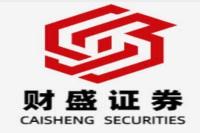China's Economic Pulse: A Deep Dive into Recent Developments
Meta Description: Uncover the latest trends shaping China's economy: from infrastructure investment and technological advancements to foreign policy and market fluctuations. Expert analysis and insightful commentary included. Keywords: China's economy, infrastructure, technology, foreign policy, market fluctuations, economic pulse
Are you ready to unravel the intricate tapestry of China's economic landscape? Buckle up, because this isn't your average news recap. We're diving deep into the heart of recent developments, examining the interwoven threads of policy, technology, and global influence. Forget dry statistics – we're bringing you a vibrant, human-centered analysis that unveils the stories behind the headlines. From the ambitious plans for resilient cities and the relentless push for technological supremacy to the strategic implications of foreign policy decisions and the ever-shifting tides of the stock market, we'll dissect it all with a blend of seasoned expertise and relatable insights. You'll gain a clearer understanding of the forces shaping not only China's future but also its impact on the global stage. Imagine gaining a privileged perspective, getting the inside scoop on the strategic thinking behind governmental initiatives, and understanding the nuanced implications for investors and businesses alike. This isn't just data; it's a narrative unfolding before your eyes, full of intrigue and potential. Hold on tight, as we journey through the dynamic world of China's economic pulse!
China's Infrastructure Push: Building a Resilient Future
China's relentless pursuit of modernization is evident in its significant investments in infrastructure. The recent joint announcement from the Central Office and the State Council outlines a vision to create "resilient cities" by 2030. This isn't just about building more roads and bridges; it's a holistic approach, aiming for smarter, safer, and more efficient urban environments. The plan envisions a significant boost in infrastructure by 2027, setting the stage for more ambitious goals in the following years. This initiative involves a wide spectrum of improvements, from upgrading transportation networks to enhancing digital connectivity, ultimately striving for better city management and risk mitigation. Think of it as building a city that can withstand and adapt to everything from natural disasters to cyberattacks. This is a game-changer, not just for China's urban areas but also for the global landscape of urban planning and resilience.
Technological Advancements: A Race to the Top
The drive for technological self-reliance is a key theme in China's current economic strategy. President Xi Jinping's recent visit to the Information Support Force underscored this commitment, with a clear mandate to build a powerful, modernized force. This signifies a major push to advance China's capabilities in cyber warfare and network security, areas vital for national security and economic growth in the digital age. This isn't just about catching up; it's about leading the charge. The push extends to other sectors as well. The government's encouragement of domestic product usage in government procurement, offering a 20% price advantage, clearly displays a strategy to foster the growth of domestic industries and reduce reliance on foreign technology. This also involves aggressive R&D investment and talent cultivation, as seen in the recent initiatives to integrate AI education into primary and secondary schools by 2030. The ambitious goals are evident in the announcement of initiatives like 6G frequency research and the development of AI chip development departments by companies like SK Hynix. It's a high-stakes game, and China is playing to win.
Navigating Global Dynamics: Foreign Policy and Trade
China's recent actions on the global stage reflect a proactive and assertive foreign policy. The countermeasures taken against US defense companies, a direct response to arms sales to Taiwan, highlight the complexities of the US-China relationship. This is a high-stakes game of geopolitical chess, with significant implications for global trade and stability. Similarly, the pushback against US trade practices, as seen in the response to potential anti-dumping tariffs on Southeast Asian solar products, indicates a growing determination to defend its interests on the international stage. However, China is also showing a willingness to engage in global cooperation, as demonstrated by the warm reception given to Blackrock CEO Larry Fink, signaling a continued openness to foreign investment while carefully safeguarding national interests. This delicate balancing act underscores the complexities of China's place in the global order – a major player navigating a challenging geopolitical landscape.
The Chinese Stock Market: A Rollercoaster Ride
China's stock market has been experiencing a period of significant volatility. Recent news regarding stock buyback loans, with the increase of financing ratio to 90%, aims to boost market confidence and support struggling companies. However, the market remains sensitive to both domestic and international factors. The recent surge in low-priced stocks, despite the overall market trends, points to a complex interplay of speculation and investor sentiment. The substantial increase in financing balance since September, reflecting increased leverage and speculation, also highlights the potential for significant market swings. While the market is showing signs of life, investors need to proceed cautiously, keeping a close watch on policy changes and geopolitical developments. The market's reaction to news about OpenAI's upcoming releases highlights the growing influence of technology on market sentiment, adding another layer of complexity to the already dynamic landscape.
Key Market Indicators: A Summary
| Indicator | Recent Trend | Significance |
|----------------------|-----------------------|---------------------------------------------------------|
| Shanghai Composite | Slight Increase | Mixed signals, reflecting overall market uncertainty |
| Shenzhen Component | Slight Increase | Similar to Shanghai, showing some positive momentum |
| Hong Kong Hang Seng | Decrease | Reflecting global market concerns and regional factors |
| Bitcoin | Historic High | Underscores the increasing adoption of cryptocurrencies |
| RMB | Slight Appreciation | Indicates stability amidst global economic uncertainty |
Frequently Asked Questions (FAQs)
Q1: What are the key drivers of China's infrastructure investment?
A1: The driving forces are multifaceted, including the need for modernization, urbanization, improved efficiency, and enhancing national resilience against various risks like natural disasters and economic shocks. The government envisions creating more sustainable and efficient cities.
Q2: How will the push for domestic technology affect foreign companies operating in China?
A2: Increased support for domestic companies may lead to a more challenging environment for foreign firms, especially in technology-related sectors. Foreign companies may need to adapt by collaborating with Chinese entities or focusing on niche areas where domestic competition is less intense.
Q3: What are the potential risks associated with the current level of stock market leverage in China?
A3: High leverage can amplify both gains and losses. A sharp market downturn could lead to significant losses for investors, potentially triggering a wider economic instability. Regulatory oversight and responsible investment strategies are crucial.
Q4: How does China's foreign policy influence its economic development?
A4: Foreign policy significantly impacts trade relations, access to resources, and foreign investment. A more assertive foreign policy can create both opportunities and challenges for economic growth. Maintaining a balance between asserting national interests and fostering international cooperation is vital.
Q5: What is the significance of the increased focus on AI education in China?
A5: The focus reflects China's ambition to become a global leader in artificial intelligence. By integrating AI education early, China is building a talent pool to drive innovation and compete in the global tech landscape. This is a long-term strategic move.
Q6: How stable is the Chinese economy in the face of global uncertainties?
A6: The Chinese economy displays resilience, but it's not immune to global headwinds. Internal factors like managing debt levels and maintaining economic balance are crucial in navigating external challenges. The government's proactive policy responses suggest a commitment to stability.
Conclusion: A Dynamic Economic Powerhouse
China's economic landscape is a fascinating blend of ambitious long-term visions and the realities of navigating a complex global environment. The recent developments highlight a nation on the move, aggressively pursuing technological advancement, strategic infrastructure development, and a more assertive role on the world stage. While challenges remain, China's impressive economic growth and its commitment to modernization underscore its position as a dynamic and influential player in the global economy. Staying informed about the interplay of these factors is crucial for anyone seeking to understand the future trajectory of the world's second-largest economy. The journey is far from over, and the next chapter promises to be just as captivating.



